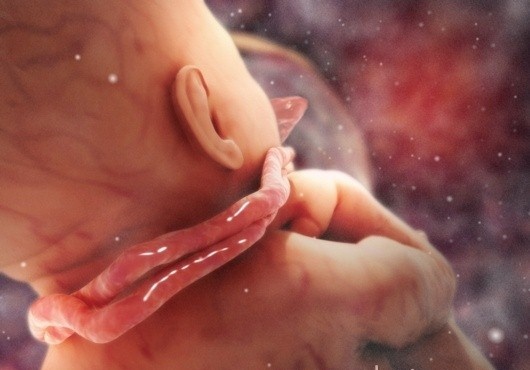The umbilical cord serves as a connecting link between the mother and the fetus. It is beneficial for the growth of the baby in the womb. This cord performs dual tasks. It provides blood, nutrients, oxygen, proteins, fats, vitamins, to the fetus and carries deoxygenated blood, and waste products back to the mother.
In pregnancy, the baby moves in the womb that causes the cord to get enveloped around the neck. This complication is also referred to as a nuchal cord. It is a common occurrence in pregnancy that afflicts nearly 20 percent to 30 percent of expectant mothers. In this article, we will discuss more about this condition, causes, symptoms and ways to treat it.
What Is a Nuchal Cord?
A nuchal cord happens when the umbilical cord encloses around the fetal neck fully or for 360 degrees. This cord is commonly seen in pregnancy from the 24th week of pregnancy. A normal umbilical cord is shielded by a sticky, and soft textured filling.
This substance prevents the cord from getting tangled irrespective of the number of times the baby takes a turn in the uterus. Umbilical cord entanglement occurs when the cord entwines itself around the entire body of the fetus. However, when this cord gets tightly entwined around the neck of the fetus, and forms a knot, then it gives rise to a complication termed as “nuchal cord”.
A nuchal cord may disturb the flow of oxygen, blood and nutrients to the fetus. Fortunately, a majority of nuchal cords will solve on its own before delivery. In cases, when the doctor identifies enlargement of the cord, then it can lead to cesarean delivery. It can even result in severe birth-related complications, and injuries that include cerebral palsy, and asphyxia.
Causes of a Nuchal Cord
The main reasons for the development of a nuchal cord are:
- Excessive movement of the fetus
- An unusually long umbilical cord
- A weak structure of the umbilical cord
- The presence of excessive amniotic fluid in the sac
- Having more than one fetus i.e., twin babies or multiples
- Inadequate jelly around the umbilical cord
Symptoms of Umbilical Cord Around Neck
Several symptoms can hint the presence of an umbilical cord surrounding the neck of the baby. Some of them are as follows:
Reduced Mobility Of The Fetus: If you notice that the movement of the baby is reduced after 37 weeks of pregnancy, then it can be a sign of this complication.
An Unusual Heart Rate: The second important sign of a nuchal cord is when the fetal monitor identifies the presence of this cord. This is performed by assessing the unusual heartbeat. Ultrasound scans can identify whether the baby is suffering from respiratory issues, or hypoxia caused due to a nuchal cord.
Diagnosis of a Nuchal Cord
The presence of this complication is detected in the routine obstetric ultrasound scan. This scan provides several images of the neck of the fetus. It can tell if there is any abnormal heart rate or oxygen, or breathing difficulties in the fetus. Based on these images, a doctor can also tell how many times the cord has got wrapped around the fetus’s neck. If the umbilical cord is wrapped around three-quarters of the neck of the fetus, then it is determined as a nuchal cord.
Treatment of Nuchal Cord
Presently, there are no means available to treat or prevent nuchal cords. Your doctor will closely monitor the health of the baby. He will check if there is any compression of the umbilical cord at the time of labor. If he feels that the fetus is in distress, and there are possibilities of birth-related complications, then he may advise you a cesarean delivery. As vaginal delivery can adversely impact the mother, it is not advisable.
Prevention of Umbilical Cord Around Neck
Unfortunately, it is not possible to prevent tangling and detangling of the cord around the neck of the fetus during pregnancy. As the factors that cause the development of a nuchal cord can’t be uncontrolled, birth complications resulting due to this complication can’t be prevented. However, timely detection and effective measures can help in dealing with this condition during childbirth.
Also read: Umbilical Cord Care; Cleaning and Signs of Infection
Conclusion
A nuchal cord is a common concern in women. If there is any such presence found in the routine ultrasound, then it will be monitored. Also, the fetal heart rate will be supervised carefully throughout the labor, and pregnancy. If deemed necessary, your doctor may determine a cesarean birth. So, stay calm and enjoy all phases of pregnancy.

